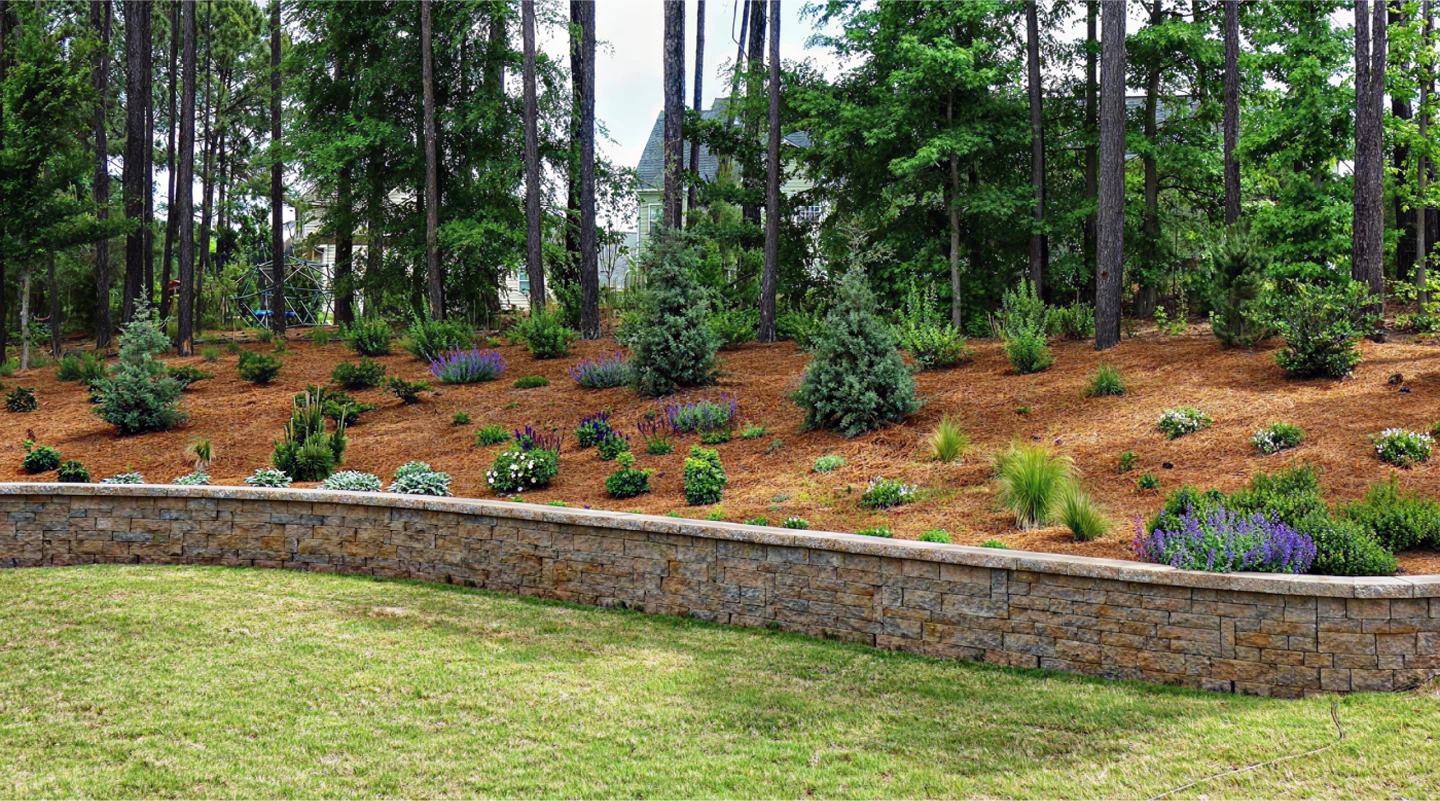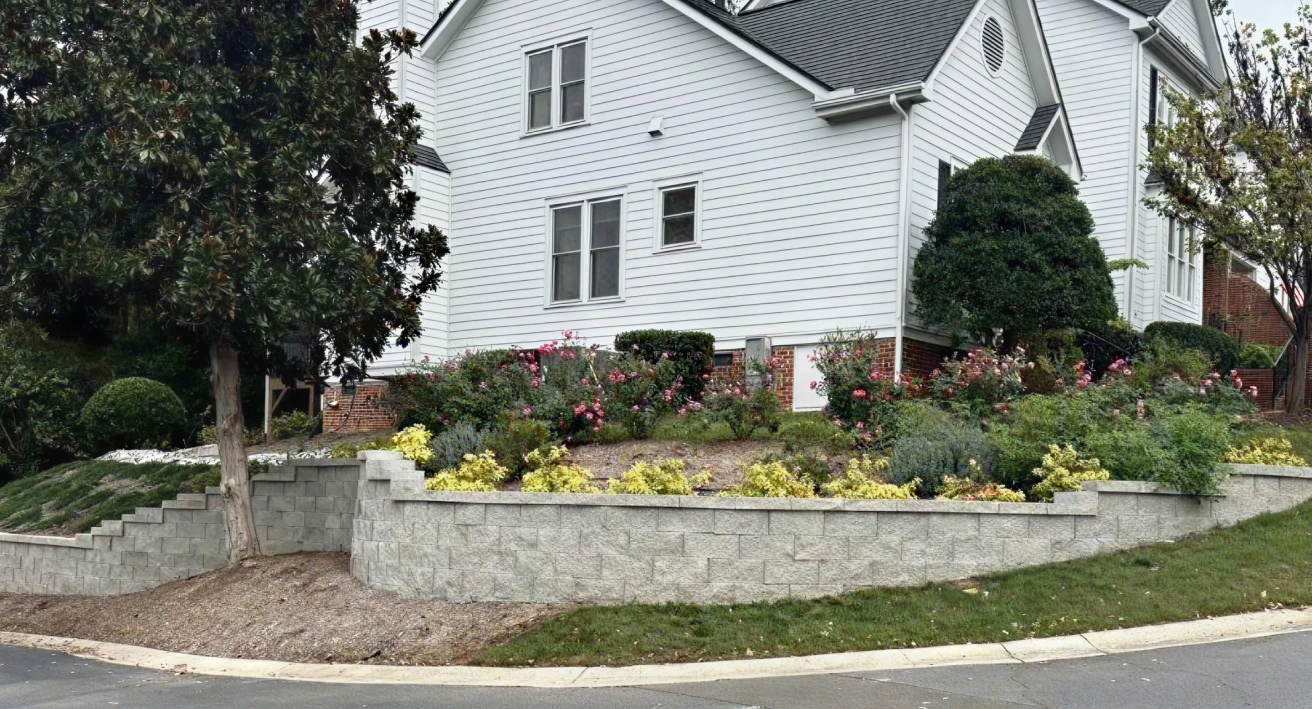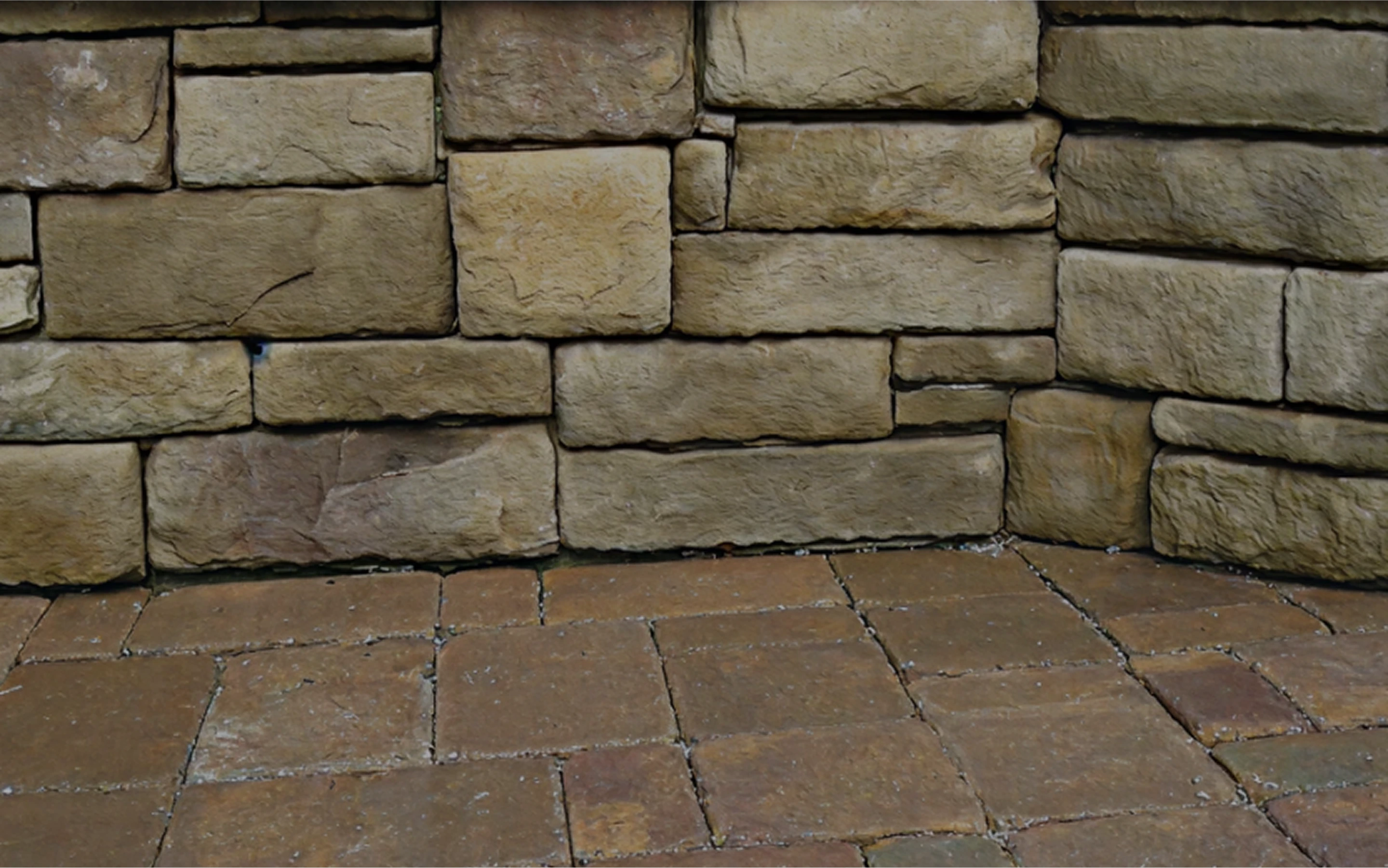Retaining Wall Installation in Cary, Raleigh, Apex & Holly Springs
Add structure, beauty, and lasting value to your landscape with custom retaining wall installation from local experts.

Transform Your Yard with a Custom Retaining Wall
A professionally built retaining wall does more than hold back soil—it creates usable space, prevents erosion, and brings definition to your outdoor living areas. Our team designs and installs walls that fit your property’s needs and style, using materials like stone, block, brick, or timber to ensure strength and curb appeal.
Call Us: (919) 337-5174

Engineered for Stability and Designed for Your Landscape
Every yard is unique, and so is every retaining wall we build. We start with a thorough site assessment, plan for proper drainage, and select materials that complement your home and withstand the Triangle’s climate. Whether you need to manage a slope, terrace your yard, or create a raised garden, we deliver walls that are both functional and visually appealing.
Why Choose Renz Landscapes for Retaining Wall Installation?
At Renz Landscapes, we blend expert construction with thoughtful design, ensuring your retaining wall enhances both the look and function of your property. Our local experience, attention to detail, and commitment to quality mean your wall will last for years to come—and look great in every season.
What You Should Know About Retaining Wall Installation
Costs vary depending on the size, materials, and site conditions. We provide clear, detailed estimates so you know exactly what to expect.
We offer stone, block, brick, and timber options, and help you choose what works best for your property and style.
Yes, we offer both repair and replacement for aging or damaged walls.
Absolutely. Proper drainage and any needed permits are always included in our installation process.
The best use cases for retaining walls include preventing soil erosion on slopes, leveling uneven yards to create flat, usable spaces such as lawns or play areas, managing water drainage by directing runoff safely away from structures, creating garden beds or terraces for planting, providing structural support near driveways, patios, or paths built on slopes, defining outdoor spaces with features like seating walls or borders, and enhancing curb appeal and property value through attractive, functional hardscaping.
Yes. Retaining walls help by creating level, stable areas in yards with slopes, turning uneven or steep ground into flat, safe spaces ideal for children to play. This reduces hazards like tripping on uneven ground or soil erosion. Additionally, retaining walls can define specific play zones, helping with supervision and safety.
Ready to reclaim your landscape?
Contact us today


